Not Again: Google Home Max Can Also Damage Wood Furniture
We already know about the Apple HomePod and Sonos One, but Google's largest smart speaker also failed our test.
After discovering — to my furniture’s detriment — that the Apple HomePod and the Sonos One speakers can potentially leave white marks on certain wood surfaces, I decided to see what other smart speakers are capable of causing similar damage.
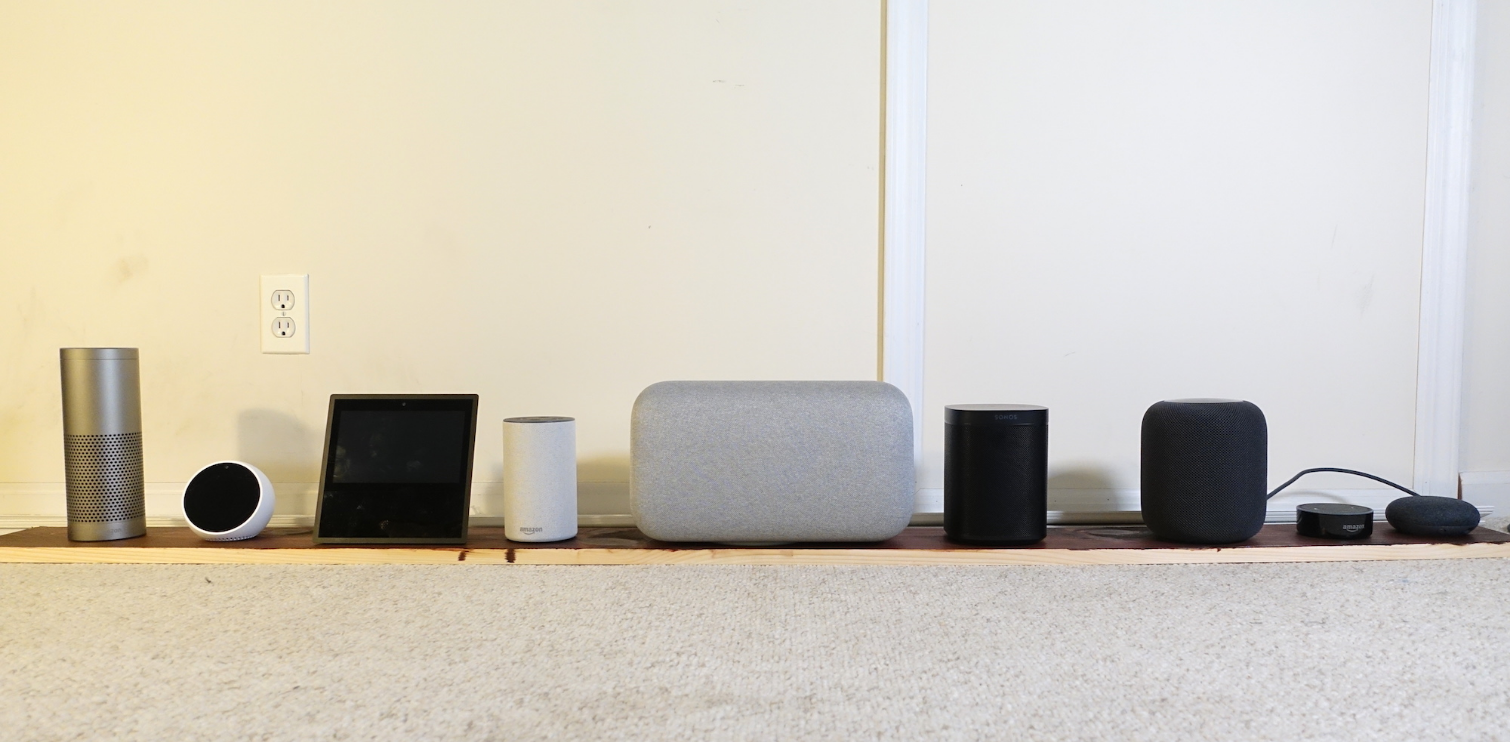
Not wanting to subject my mahogany cabinet to any more abuse, I bought a pine board from Home Depot, along with some mahogany stain and Howard’s Feed-N-Wax — an oil-based finish that was also used on my furniture.
As it turns out, the Google Home Max can damage wood just like the Apple HomePod and Sonos One, but there is some good news.
After letting the board dry, I placed the following nine smart speakers on it:
Then, I left them on the board, turned off, for a little more than 27 hours. Here’s what happened.
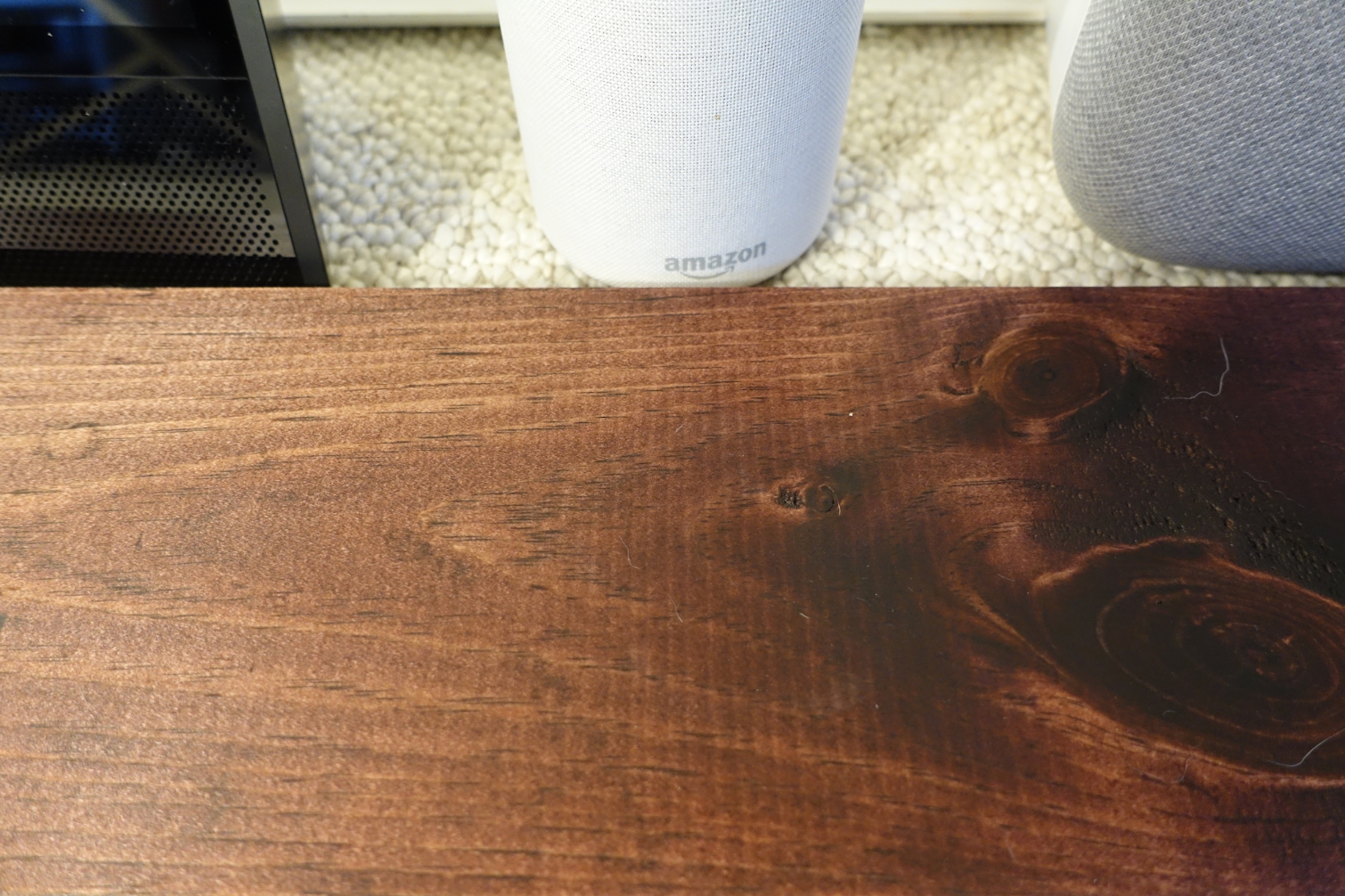
Amazon Echo: No marks
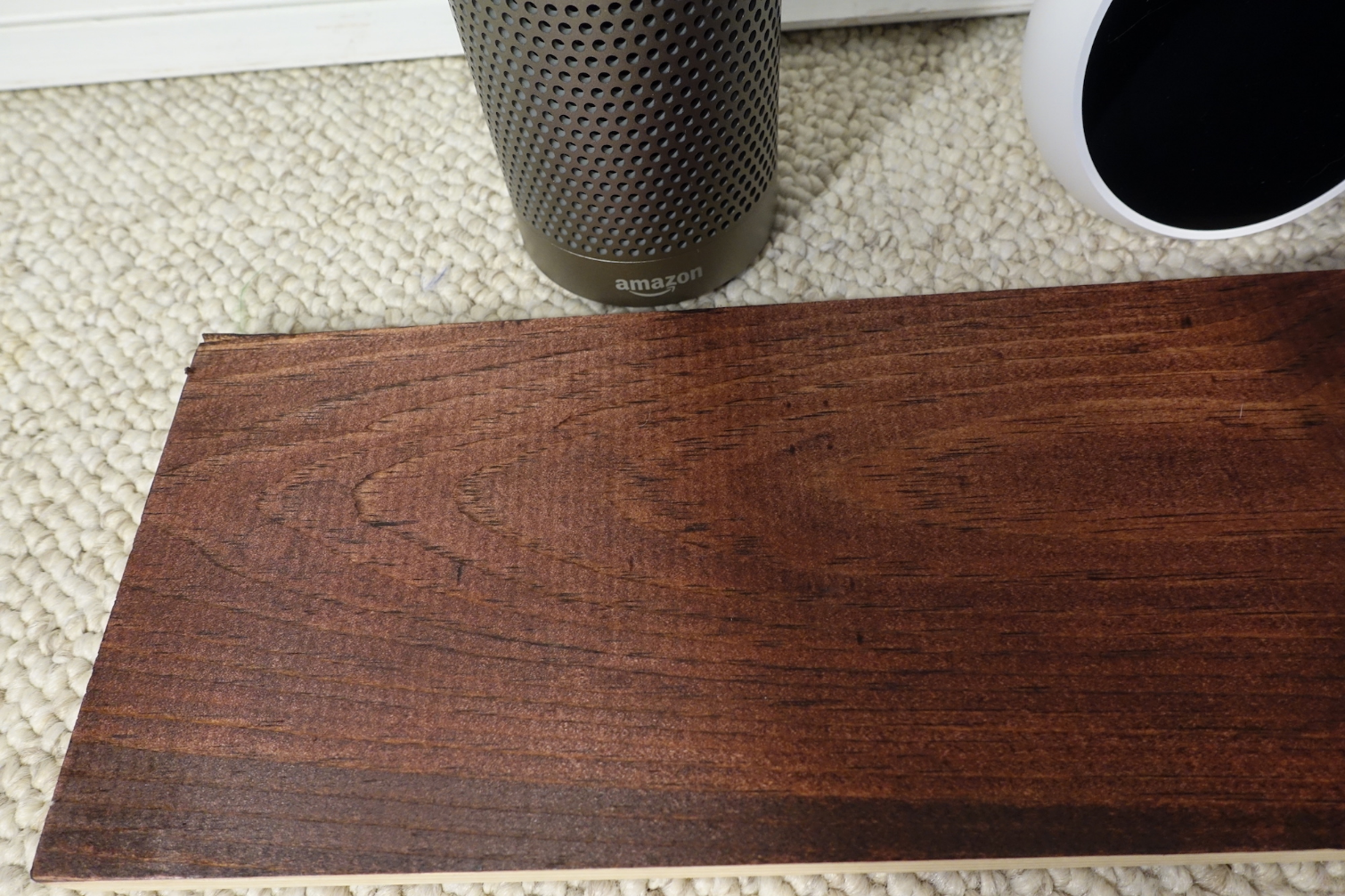
Amazon Echo Plus: No marks
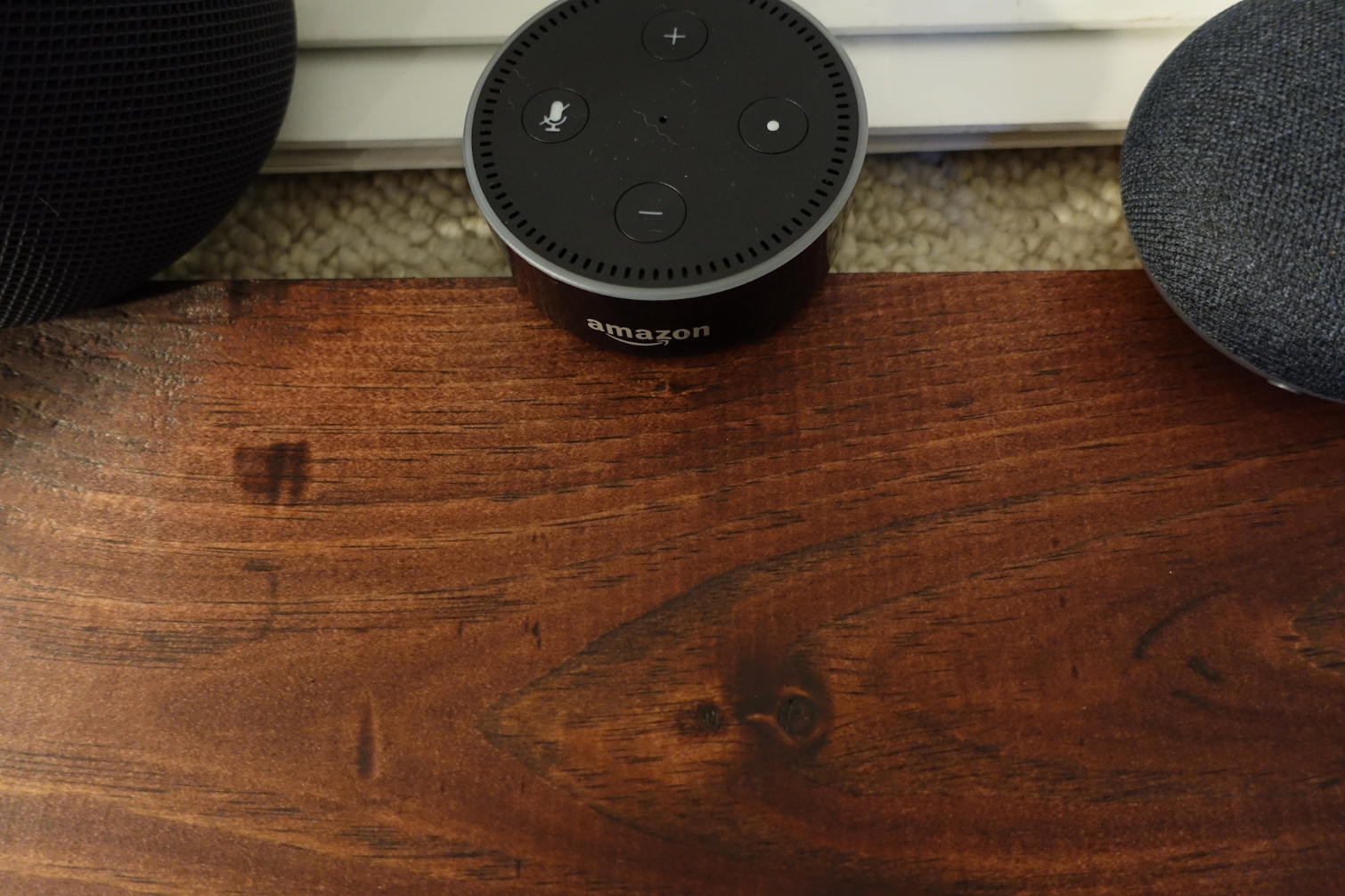
Amazon Echo Dot: No marks
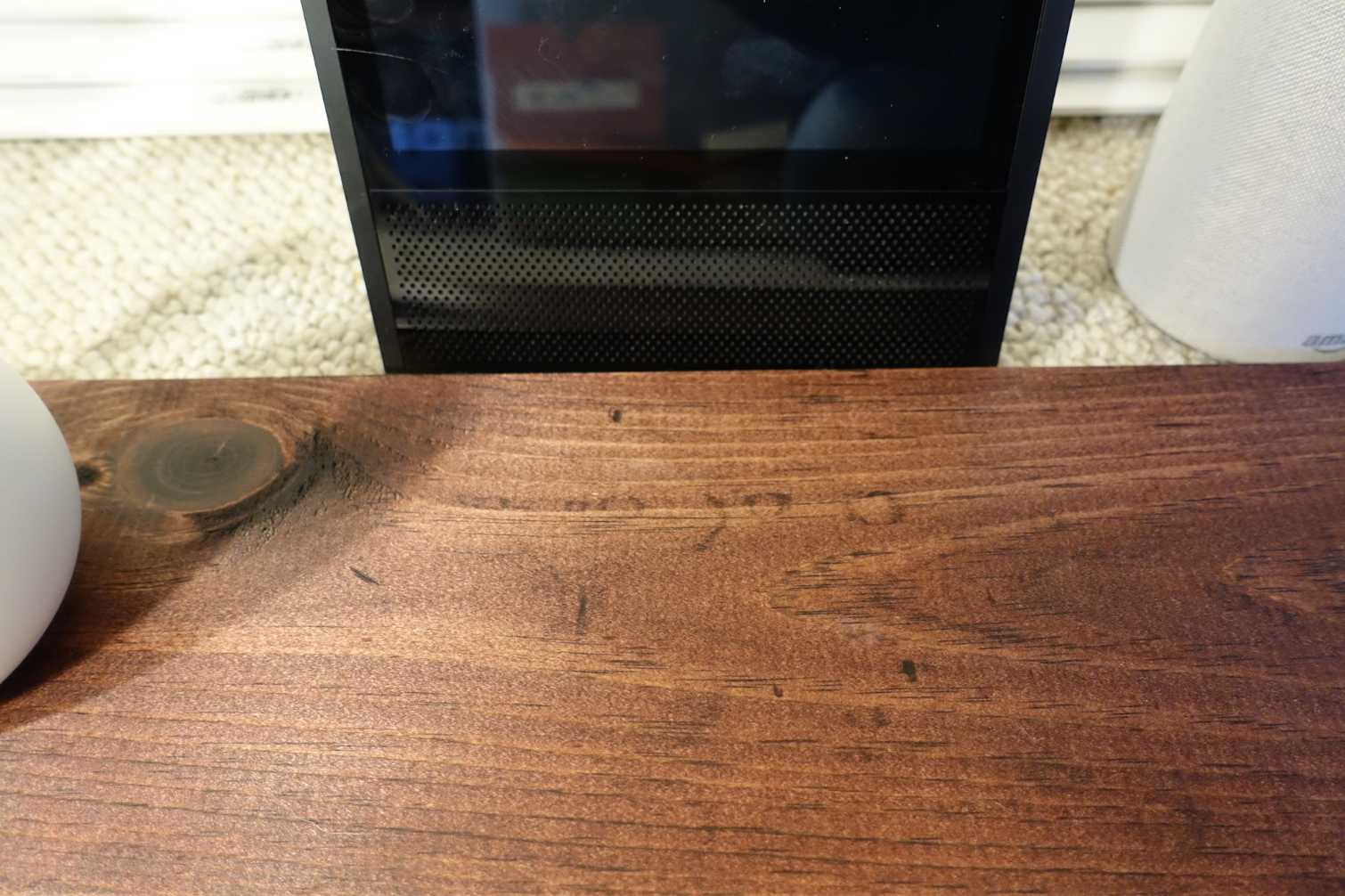
Amazon Echo Show: No marks
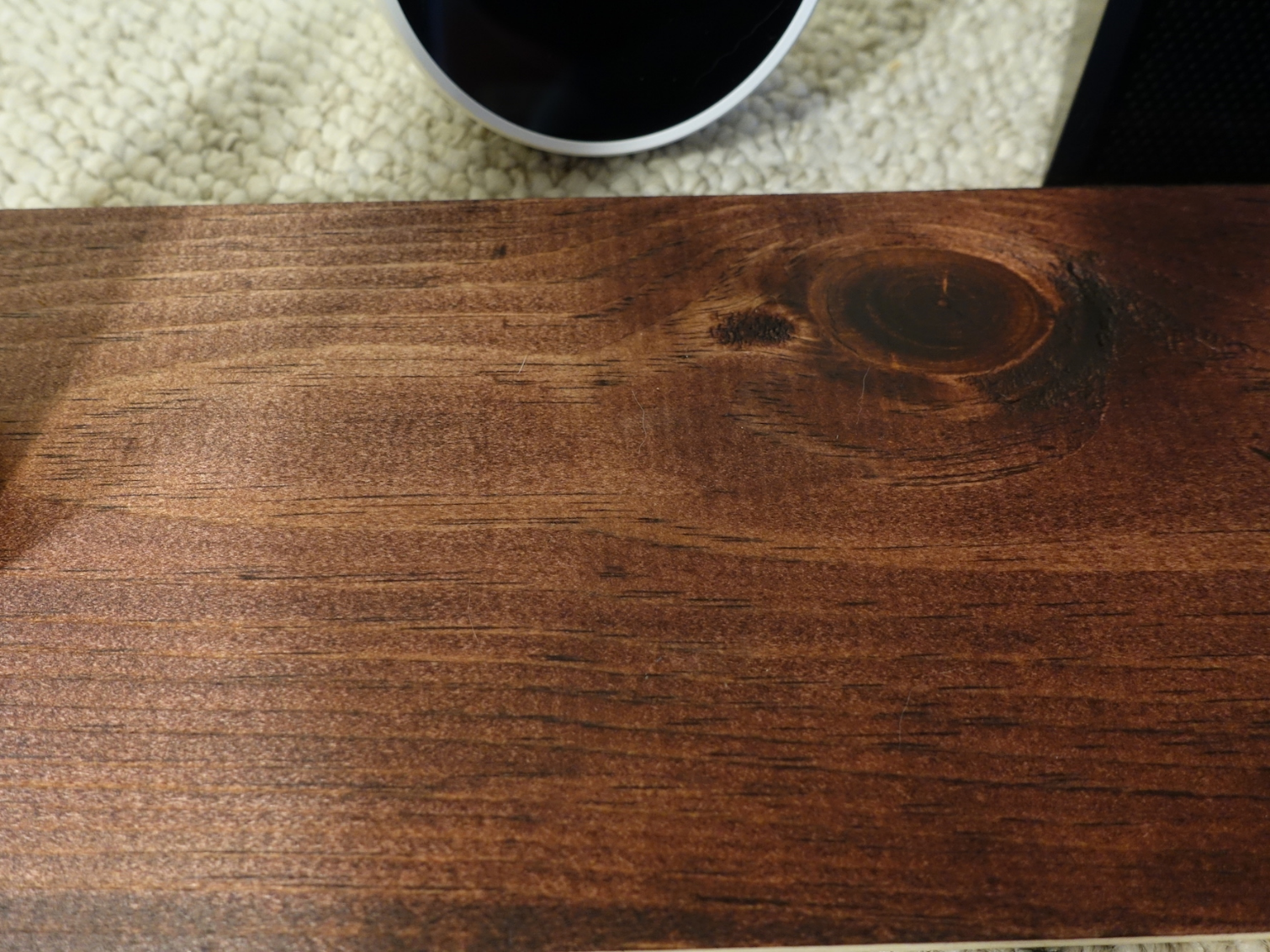
Amazon Echo Spot: No marks
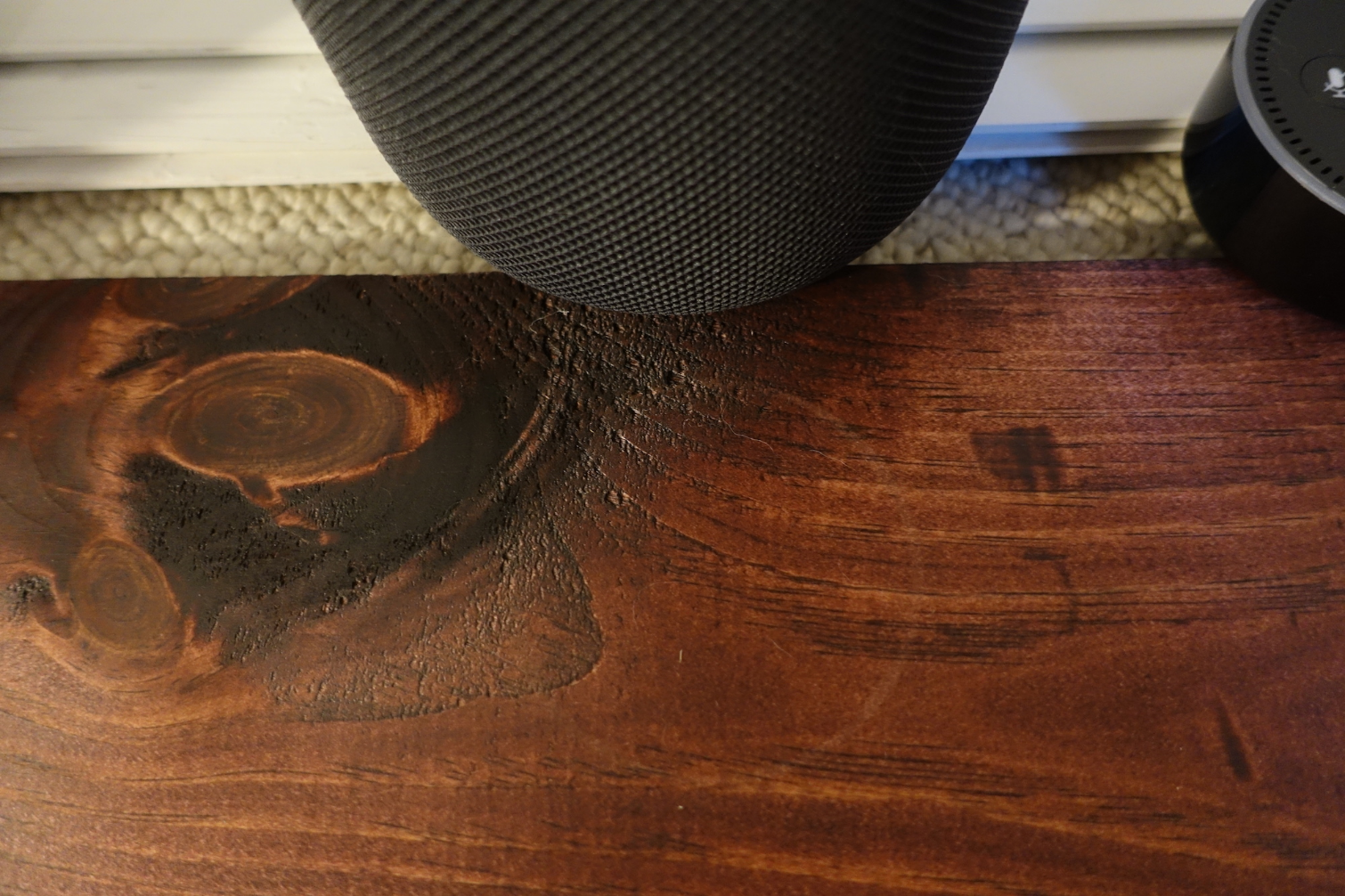
Apple HomePod: The HomePod left a telltale ring on the pine board, although it wasn't as prominent as the one on my cabinet.
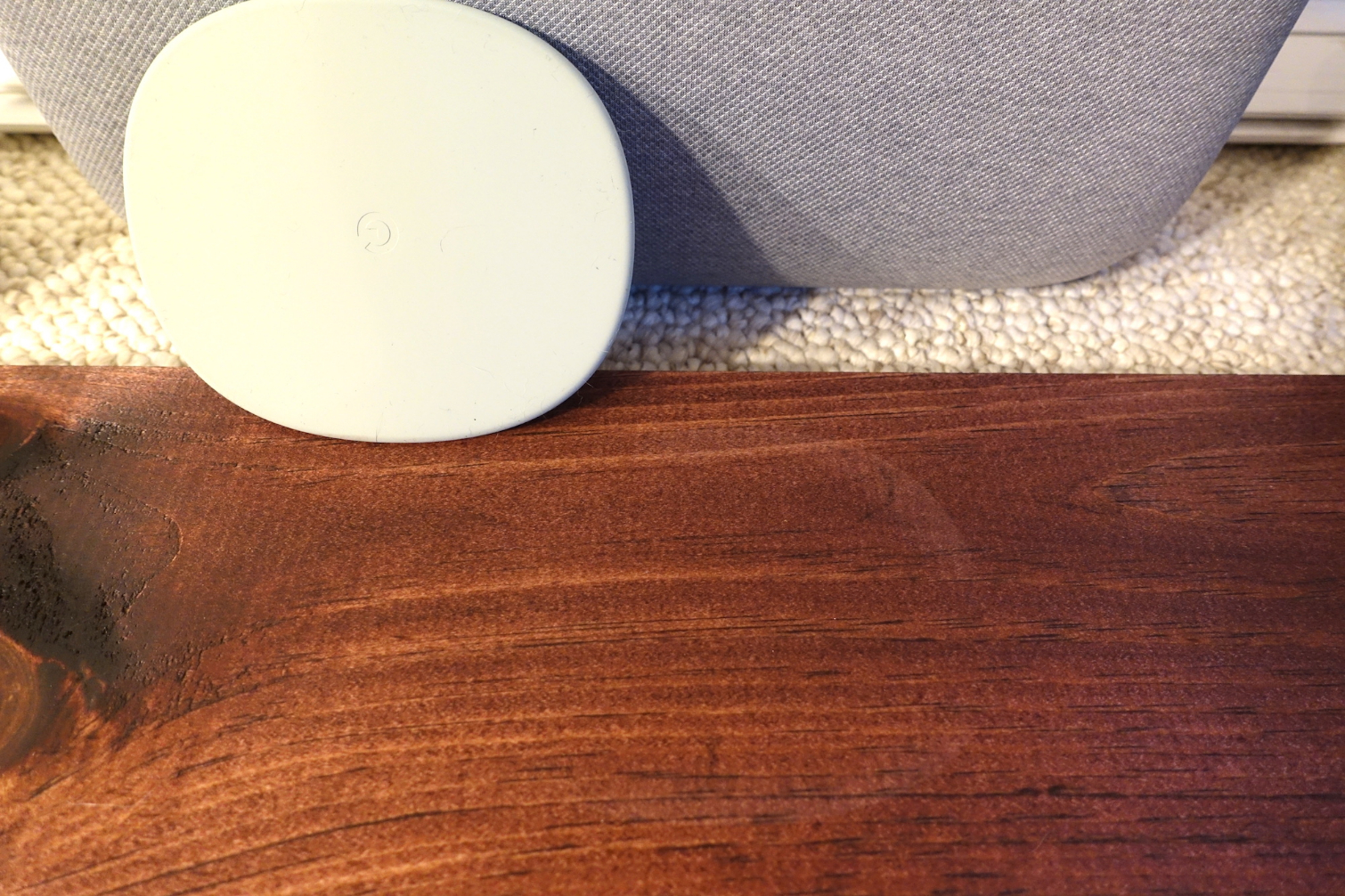
Google Home Max: Large white mark, caused by the silicone pad that Google ships with the speaker.
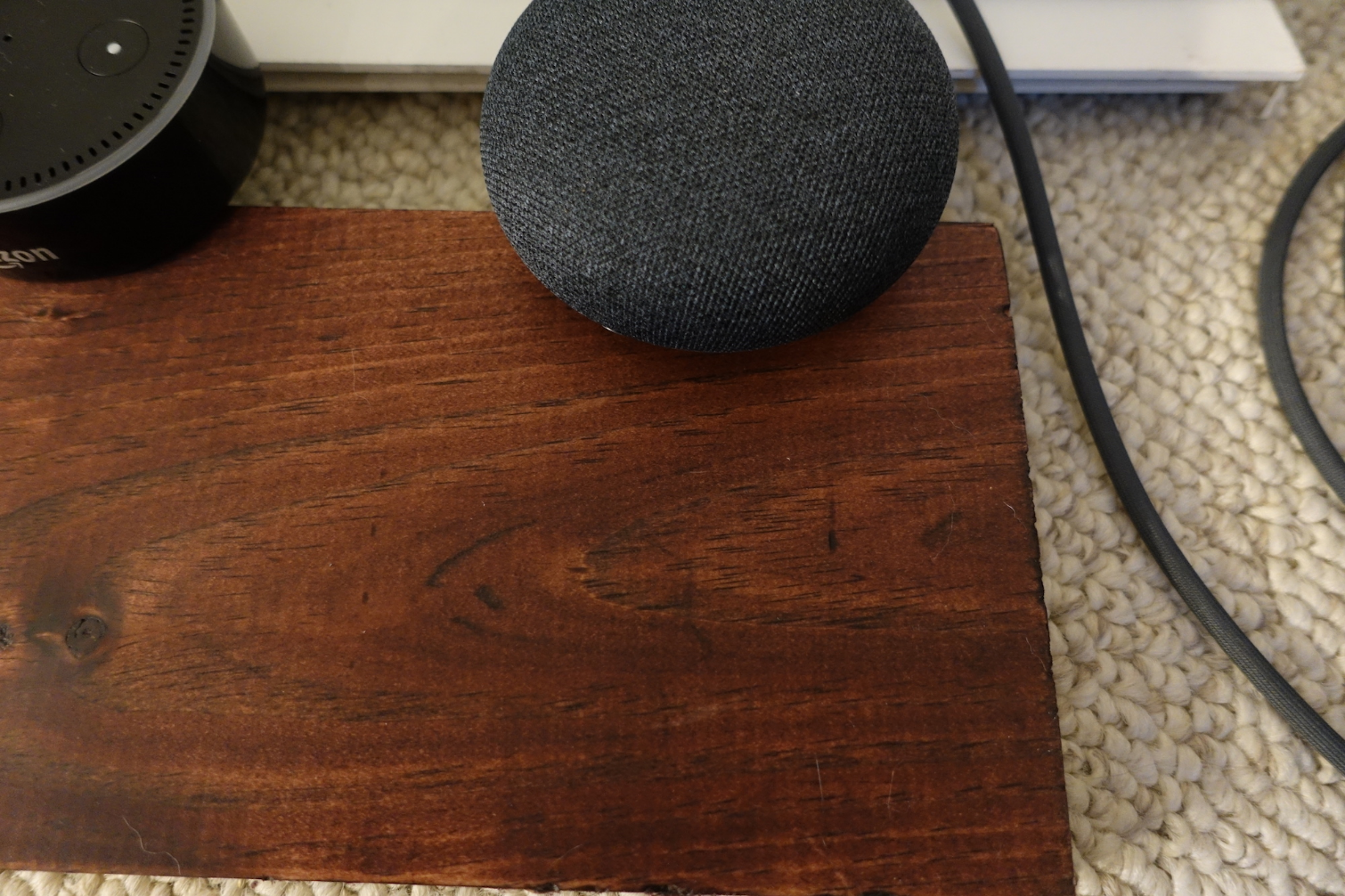
Google Home Mini: No marks
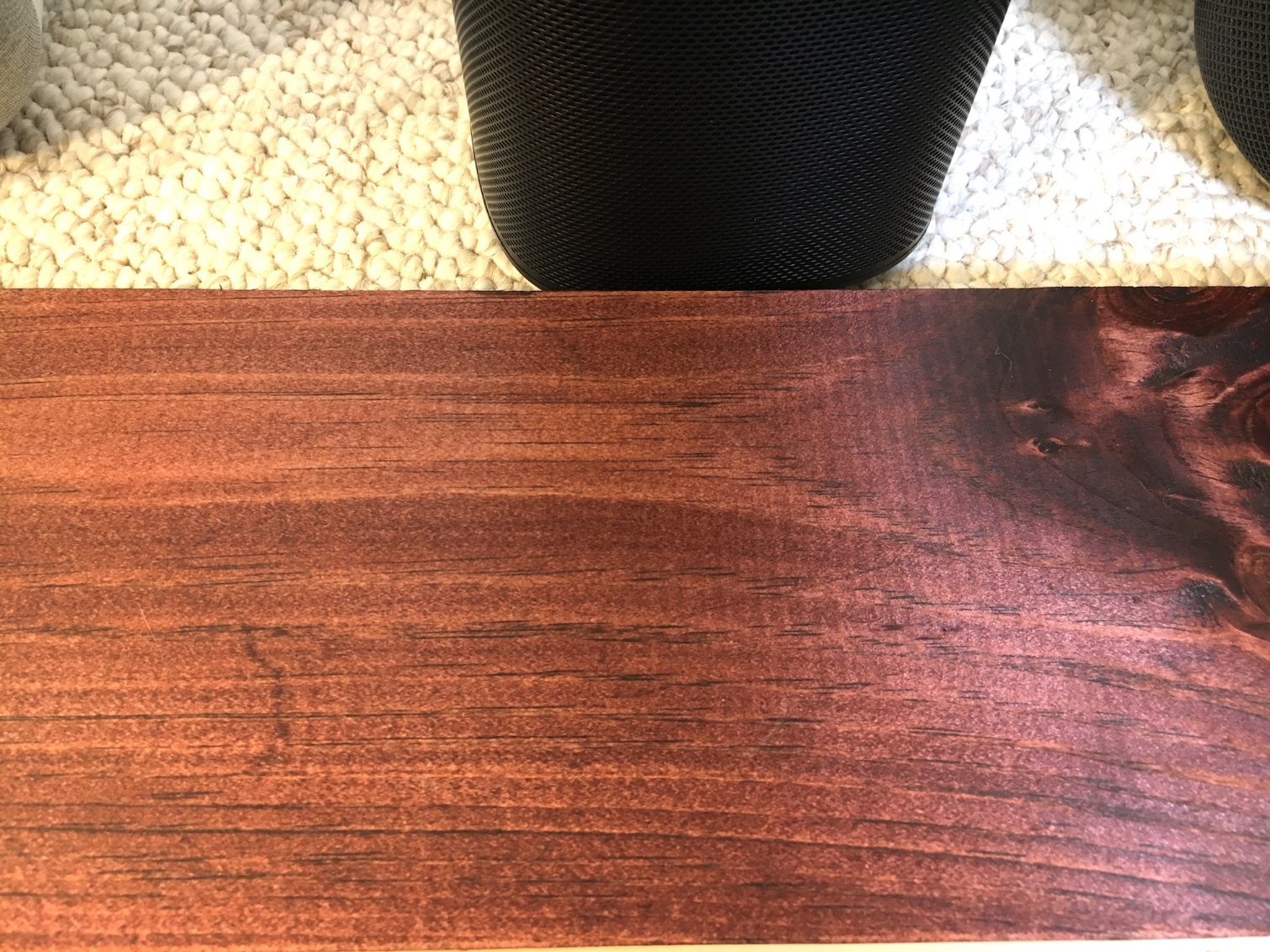
Sonos One: Also left four small, white marks that were not as pronounced as the ones left by the others tested (nor as prominent as the one on my cabinet), but they were still visible.
Why hadn’t I noticed the Home Max’s white mark before, when Google’s speaker was sitting on my cabinet? Simple: I wasn’t using it with the silicone pad at the time.
Google ships the pad with the Max, but I had left the pad in the box, figuring it wasn’t that necessary. However, when devising this test, I decided to use the pad to see its effect. So, if you have or plan to purchase the Google Home Max, and want to place it on wood furniture, I would advise against using the silicone pad.
Update (2/21): A Google spokesperson thanked us for bringing this to their attention, and added "To date, we've not received any reports about this issue in regards to Max."
I still think the Sonos One, HomePod and Google Home Max (to a slightly lesser extent) deliver the best sound of all the smart speakers. When we put all three to the test, the Sonos One came out on top, but the Google Home Max was competitive, not only for its sound, but also for what you can do with Google Assistant. But if you purchase or own any of the speakers that can damage furniture, I advise placing it on a non-silicone pad or coaster.
Sign up to get the BEST of Tom's Guide direct to your inbox.
Get instant access to breaking news, the hottest reviews, great deals and helpful tips.

Michael A. Prospero is the U.S. Editor-in-Chief for Tom’s Guide. He oversees all evergreen content and oversees the Homes, Smart Home, and Fitness/Wearables categories for the site. In his spare time, he also tests out the latest drones, electric scooters, and smart home gadgets, such as video doorbells. Before his tenure at Tom's Guide, he was the Reviews Editor for Laptop Magazine, a reporter at Fast Company, the Times of Trenton, and, many eons back, an intern at George magazine. He received his undergraduate degree from Boston College, where he worked on the campus newspaper The Heights, and then attended the Columbia University school of Journalism. When he’s not testing out the latest running watch, electric scooter, or skiing or training for a marathon, he’s probably using the latest sous vide machine, smoker, or pizza oven, to the delight — or chagrin — of his family.
-
velocityg4 No one will care because it is Google. Google users aren't prissy. They will just toss a piece of cardboard or empty beer can under it and call it a day. :PReply -
pedroneil I can't believe someone wrote so many words on why to use placemats or sound buffer for for objects that they place on their furnitureReply -
wakamole your title is misleading I don't see any wood damage but it does show a change to the finish.Reply -
totinfo oil base stain, varnish or shellac is the one will be damage not the wood, why not put it in a glass or steel instead?, i have a 400W Logitech Z625, or the 400W Creative T6, despite this are heavy and powerful triple woofer bass box and super powerful satellites why it didn't leave a mark on a stained wood?Reply -
fireitup913 "Google ships the pad with the Max, but I had left the pad in the box, figuring it wasn’t that necessary."Reply
Is there a reason you assumed the pad Google shipped with the speaker was not necessary? These rubber/silicone pads isolate the speaker and reduce low-end vibration transfer; this affects sounds quality. This is why everyone of the speakers reviewed have them, Google just made theirs for either speaker orientation. If you buy a pair of regular bookshelf speakers they will come with similar pads to stick on. They are typically referred to as "isolation pads" and have a very real affect on sound quality. You can find many articles and forums about this and people noting the increase in sold quality, especially if the speaker was on a hard surface. I just looked at your face off of the Sonos One, Homepod and Google Home Max and it is clear from the pictures that you do not have the pad under the Google Home Max. This will most likely negatively affect its sound quality especially since its on a hard desk where its going to have vibration transfer . Considering every other speaker had their pads because they are permanently attached, that is a disadvantage to the Max and may have affected its audio quality score. -
madtestengineer1 This is still going on, let this nonsense story die already. There is nothing new about silicone and oil and wax finishes on wood. Lighter the load on silicon, the longer it takes to cause a mark. The heavier the load on the silicone, the faster the marks appear. After 2 weeks my google home mini left a very light mark. Also depends on which oil or wax you use, the time it takes the lighter devices to register a mark.Reply
